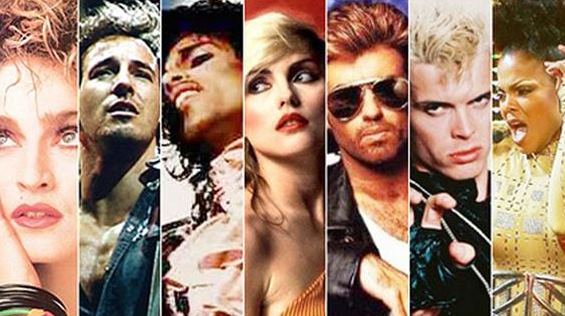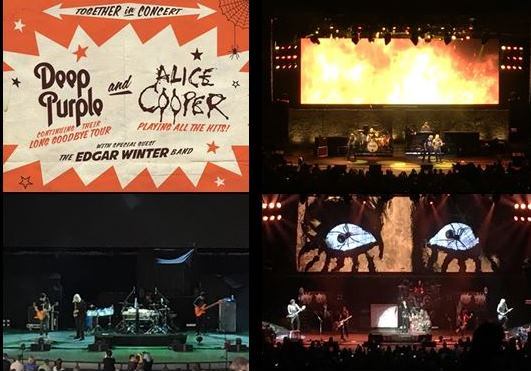1964: The Beatles performed the first of two gigs at Forest Hills Tennis Stadium in Queens, New York during the U.S. leg of their world tour that year. They played their standard 12-song set of original tunes largely drawing from the A Hard Day’s Night album, as well as rock & roll covers. The tunes included Twist And Shout, You Can’t Do That, All My Loving, She Loves You, Things We Said Today, Roll Over Beethoven, Can’t Buy Me Love, If I Fell, I Want To Hold Your Hand, Boys, A Hard Day’s Night and Long Tall Sally. After the show, The Fab Four met Bob Dylan who visited them in their suite at the Delmonico Hotel in New York City. Beatles biographer Jonathan Gould noted the musical and cultural significance of the meeting, saying within six months, “Lennon would be making records on which he openly imitated Dylan’s nasal drone, brittle strum, and introspective vocal persona”; and six months after that, Dylan began performing with a backing band and electric instrumentation, and “dressed in the height of Mod fashion.” While the fact that great music artists influence each other isn’t exactly surprising, based on The Beatles Bible’s account of that night, it seems to me John, Paul, George and Ringo primarily got stoned with Dylan who brought along some grass to smoke. Not really sure how much their condition allowed them to have meaningful conversations about music. Here’s some footage from the Forest Hills show, a great illustration of Beatlemania, which makes me wonder why The Beatles didn’t stop touring earlier.
1965: Exactly one year after The Beatles, Bob Dylan took the stage at Forest Hills Tennis Stadium, marking the first night of a 40-date North American tour. Following a solo section, Dylan played an electric set. This all happened only about a month after he had rattled the “folkies” at the Newport Folk Festival. On that night in Forest Hills, Dylan’s electric backing band featured guitarist Robbie Robertson and drummer Levon Helm, who were then associated with a band called The Hawks, a predecessor to The Band. Harvey Brooks (bass) and Al Kooper (organ) rounded out the line-up. After the first two shows of the tour, Robertson and Helm insisted that their mates from The Hawks join Dylan’s backing band: Rick Danko (bass), Garth Hudson (keyboards) and Richard Manuel (drums). Dylan agreed, and until May 1966, they would be billed as Bob Dylan and the Band. Here’s a clip of Like A Rolling Stone, which supposedly was captured from the Forest Hills gig. The sound quality is horrible, but, hey, it’s mighty Dylan and it’s historical!
1968: Simon and Garfunkel’s fourth and second-to-last studio album Bookends hit no. 1 on the UK Official Albums Chart Top 100, starting a five-week run in the top spot there. Apart from the title track, the record featured gems like America and the no. 1 U.S. single Mrs. Robinson. Written by Paul Simon, the tune had become famous the previous year when it had been included in the American motion picture The Graduate. I’ve always loved the bluesy touch of that song.
1972: Alice Cooper topped the British singles chart with School’s Out, scoring his only no. 1 hit anywhere in the world. Credited to Cooper (lead vocals) and the members of his band at the time, Michael Bruce (rhythm guitar, keyboards, backing vocals), Glen Buxton (lead guitar), Dennis Dunaway (bass, backing vocals) and Neal Smith (drums, backing vocals), the tune was the title track of the band’s fifth studio album released in June 1972. School’s Out also became Cooper’s biggest chart success in the U.S., peaking at no. 7 on the Billboard Hot 100. According to Songfacts, Cooper during a 2008 interview with Esquire said, “When we did ‘School’s Out,’ I knew we had just done the national anthem. I’ve become the Francis Scott Key of the last day of school.” It’s also safe to assume, Cooper shocked some school principals and parents.
1981: British DJ, producer and band manager Guy Stevens passed away at the age of 38 years from an overdose of prescription drugs he was taking to reduce his alcohol dependency – yikes! Among others, Stevens gave Procol Harum and Mott the Hoople their distinct names. He also co-produced The Clash’s fifth studio album London Calling from December 1979, together with Mick Jones, the band’s co-founder, lead guitarist and co-lead vocalist. Stevens also brought Chuck Berry to the U.K. for his first tour there in 1963. He also was the president of the Chuck Berry Appreciation Society. According to Wikipedia, Stevens introduced lyricist Keith Reid to keyboarder Gary Brooker and told Reid at a party that a friend had turned “a whiter shade of pale”. Supposedly, these words inspired the song with the same title that was subsequently recorded by Brooker’s newly formed band Procol Harum and became a major international hit in 1967.
Sources: Wikipedia, This Day In Music, The Beatles Bible, Songfacts, YouTube











